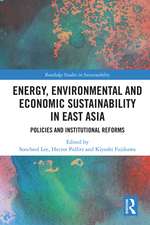Pollution Prevention: The Waste Management Approach to the 21st Century
Editat de Louis Theodore, R. Ryan Dupont, Kumar Ganesanen Limba Engleză Hardback – 20 dec 1999
The book is divided into three parts: Process and Plant Fundamentals, Pollution Prevention Principles, and Pollution Prevention Applications. Part one examines the general subject of process and plant fundamentals, equipment and calculation, process diagrams and economic considerations. Part two covers the broad subject of pollution prevention options, including chapters on source reduction, recycling, treatment methods, and ultimate disposal. Part three contains chapters devoted to specific industrial applications involving pollution prevention. The text is generously supplemented with illustrative examples.
Applying pollution prevention strategies - the most viable environmental management option of the future - offers a more cost-effective means of minimizing the generation of waste. Pollution Prevention: The Waste Management Approach to the 21st Century provides the basic principles required for understanding not only pollution prevention but also waste control.
| Toate formatele și edițiile | Preț | Express |
|---|---|---|
| Paperback (1) | 508.10 lei 6-8 săpt. | |
| CRC Press – 23 sep 2019 | 508.10 lei 6-8 săpt. | |
| Hardback (1) | 1288.34 lei 6-8 săpt. | |
| CRC Press – 20 dec 1999 | 1288.34 lei 6-8 săpt. |
Preț: 1288.34 lei
Preț vechi: 1571.15 lei
-18% Nou
Puncte Express: 1933
Preț estimativ în valută:
246.51€ • 257.41$ • 203.57£
246.51€ • 257.41$ • 203.57£
Carte tipărită la comandă
Livrare economică 15-29 aprilie
Preluare comenzi: 021 569.72.76
Specificații
ISBN-13: 9781566704953
ISBN-10: 1566704952
Pagini: 528
Ilustrații: 29 tables and 197 equations
Dimensiuni: 156 x 234 x 34 mm
Greutate: 0.91 kg
Ediția:1
Editura: CRC Press
Colecția CRC Press
ISBN-10: 1566704952
Pagini: 528
Ilustrații: 29 tables and 197 equations
Dimensiuni: 156 x 234 x 34 mm
Greutate: 0.91 kg
Ediția:1
Editura: CRC Press
Colecția CRC Press
Public țintă
Academic and Professional Practice & DevelopmentCuprins
Process and Plant Fundamentals. Introduction
Definitions. Conservation Laws and Basic Principles. Unit Operations. Plant Equipment. Ancillary Equipment. Process Diagrams. Pollution Prevention Principles. From Pollution Control to Pollution Prevention. Other Pollution Prevention Components. Pollution Prevention Assessment. Source Reduction. Recycling. Incineration. Other Treatment Methods. Ultimate Disposal. Pollution Prevention Applications. Drug Manufacturing and Processing Industry. Paper and Pulp Industry. Other Industries - General Medical/Surgical. Hospitals, and Research/Educational Institutions. Case Studies. Case Study A: A Commercial Printing Plant. Case Study B: A Paint Manufacturing Plant. Other Case Studies.
NTI/Sales Copy
Definitions. Conservation Laws and Basic Principles. Unit Operations. Plant Equipment. Ancillary Equipment. Process Diagrams. Pollution Prevention Principles. From Pollution Control to Pollution Prevention. Other Pollution Prevention Components. Pollution Prevention Assessment. Source Reduction. Recycling. Incineration. Other Treatment Methods. Ultimate Disposal. Pollution Prevention Applications. Drug Manufacturing and Processing Industry. Paper and Pulp Industry. Other Industries - General Medical/Surgical. Hospitals, and Research/Educational Institutions. Case Studies. Case Study A: A Commercial Printing Plant. Case Study B: A Paint Manufacturing Plant. Other Case Studies.
NTI/Sales Copy
Notă biografică
Louis Theodore, R. Ryan Dupont, Kumar Ganesan
Descriere
Applying pollution prevention strategies - the most viable environmental management option of the future - offers a cost-effective means of minimizing waste. Pollution Prevention: The Waste Management Approach to the 21st Century provides the background needed to understand not only pollution prevention but also waste control. Thorough, clear, and concise, it explains the fundamentals of pollution prevention and their applications to real-world problems. It explores pollution prevention through energy conservation, health and safety management, and accident prevention. The authors include illustrative examples and case studies that demonstrate the solutions offered.





























